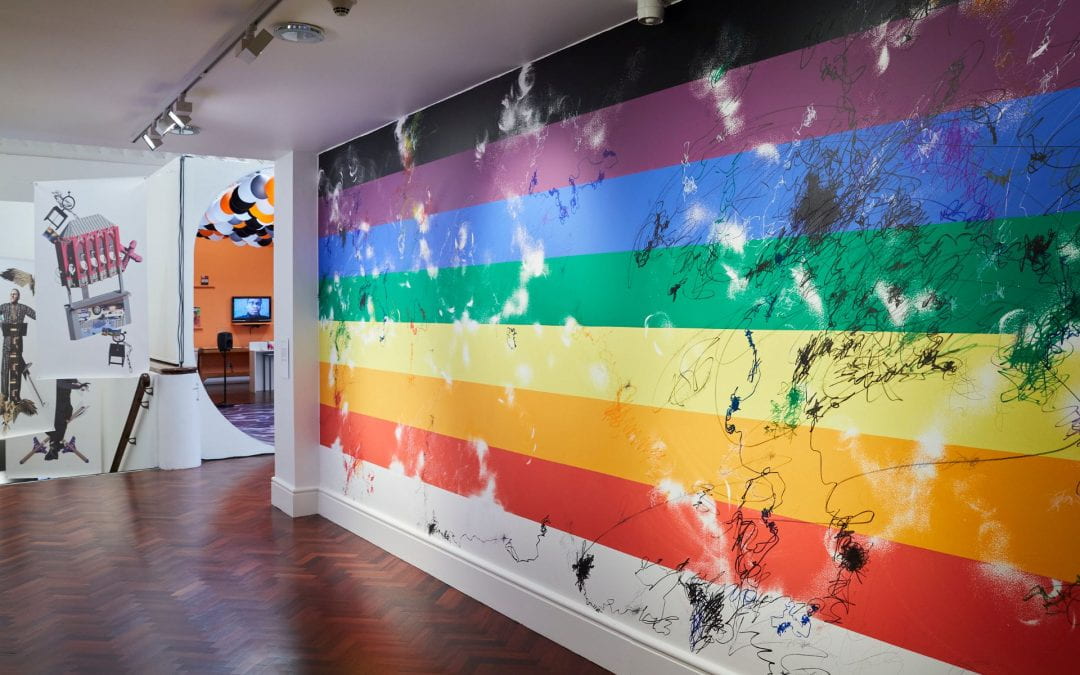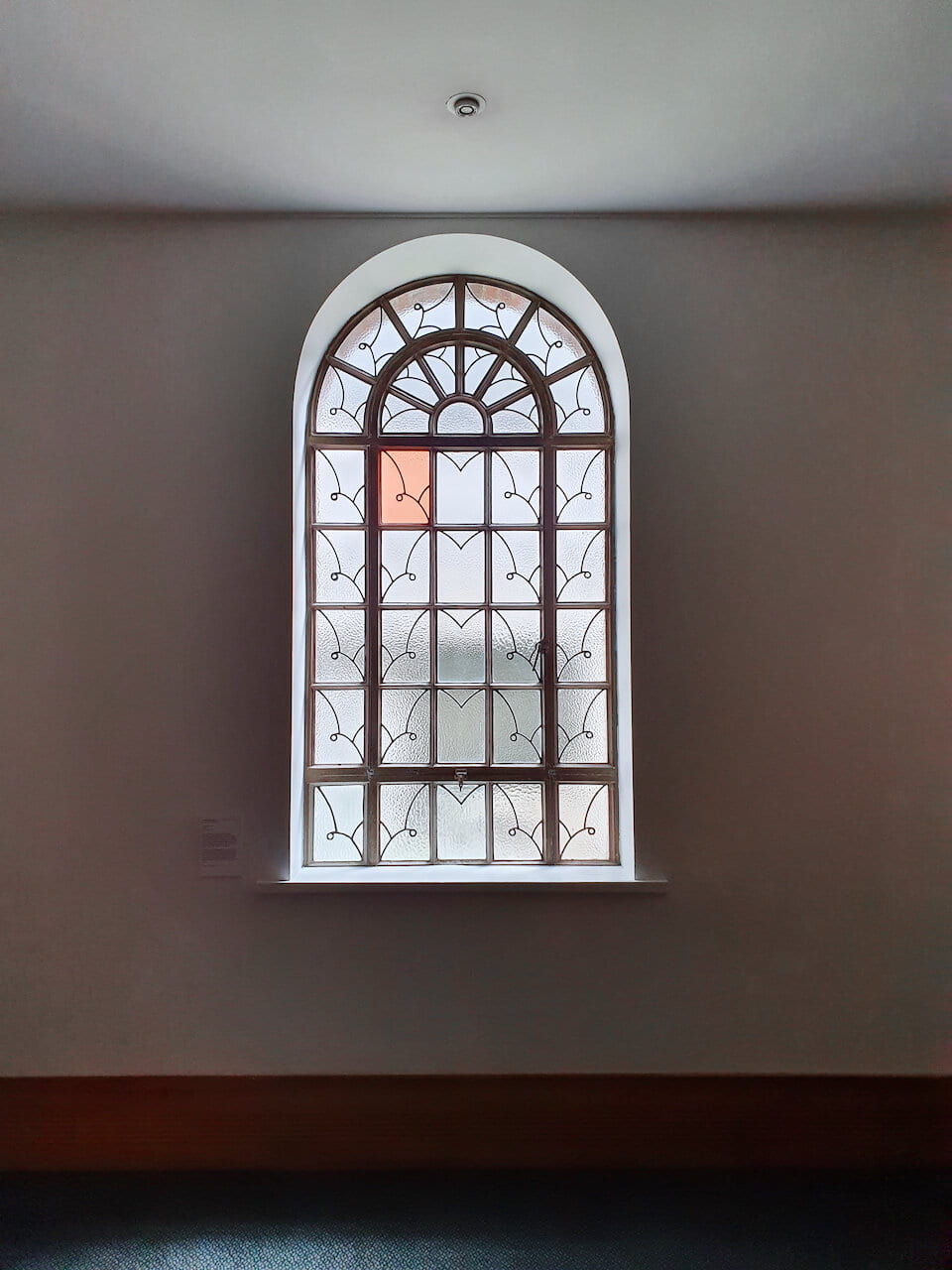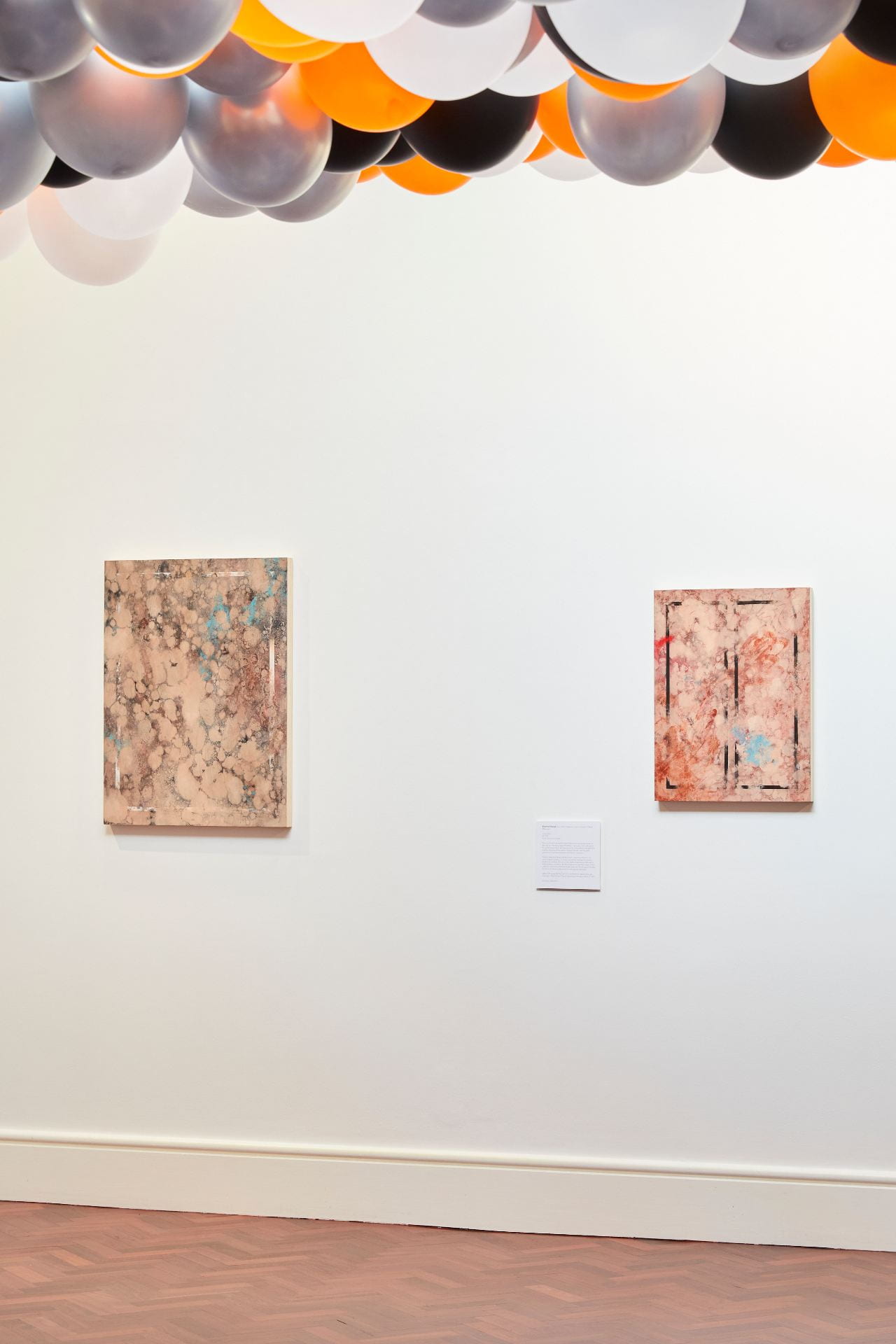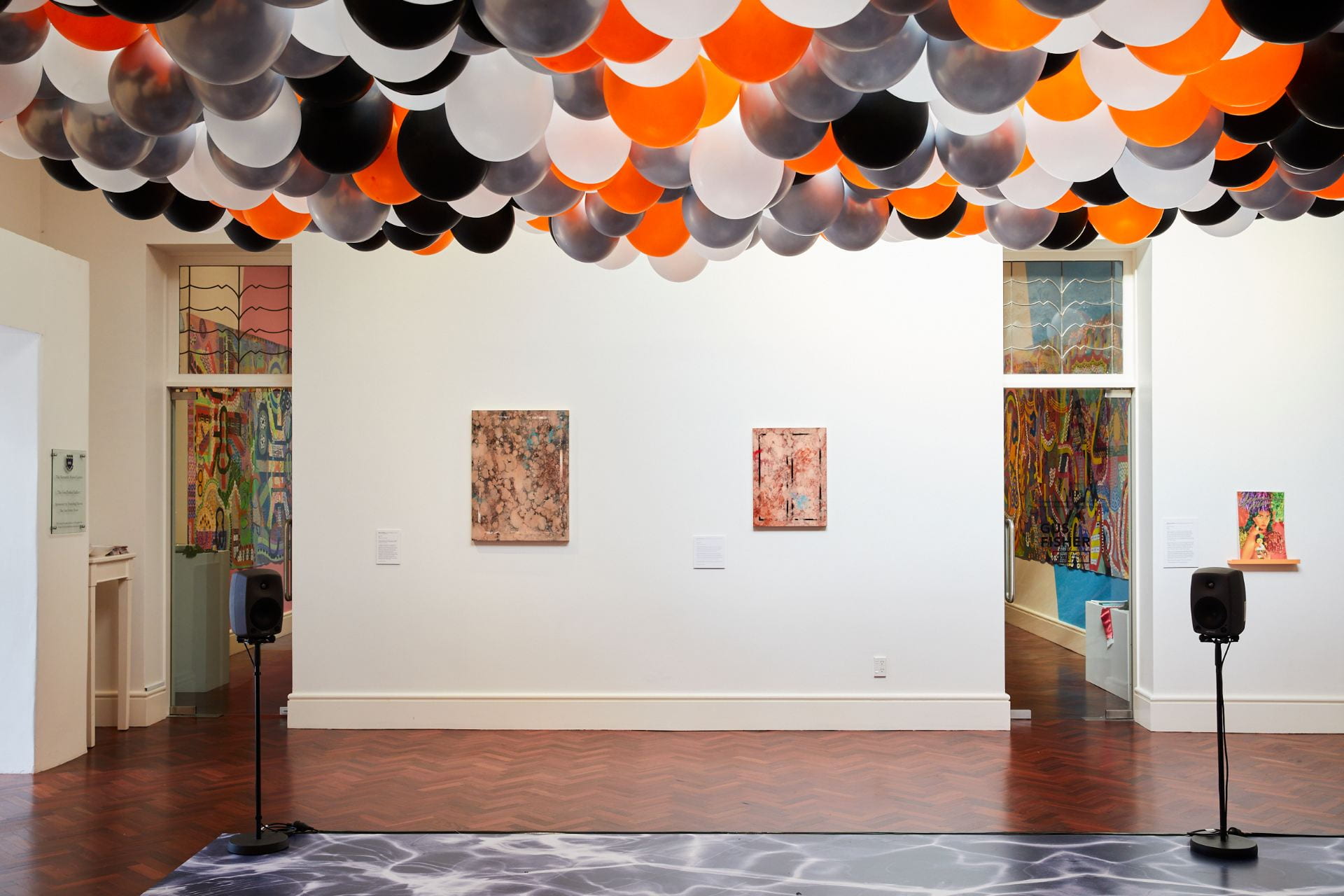Auckland-based artist Shannon Novak has a series of works in Queer Algorithms, including a large mural Gender Study I (pictured).
Can you tell us a little bit about your work that has been in Gus Fisher Gallery’s exhibition programme?
I developed a series of works that look at gender and the issues with trying to break gender down into specific categories. The work suggests the pigeon holes we put people in (M, F, X, and other) are problematic, rather we should consider removing the gender question from documentation like passports altogether and strive to liberate gender.
I also created a series of portraits (paintings on board) of individuals who have shaped New Zealand LGBTQI+ history in some major way. The board represents the body of the portrait subject and the paint represents the skin. The skin reveals the world of the portrait subject, in particular, the failure of heteronormative mechanisms/pressures to silence the individual.
The final work is less visible and more an organisational/societal change. I invited Gus Fisher Gallery to be a member of the Safe Space Alliance, a non-profit LGBTQI+ led organisation I established last year. The alliance aims to help people identify, navigate, and create safe spaces for the LGBTQI+ community worldwide. This means the gallery now displays a safe space logo onsite, and in short, has your back if you are a member of the LGBTQI+ community. Arguably, the gallery was already a safe space – joining the Safe Space Alliance made this more publicly visible.
To find out more information and/or join the Safe Space Alliance you can check out our website: https://www.safespacealliance.com
Shannon Novak, ‘Untitled’ (Stray), 2020.
Shannon Novak, Fran Wilde (left) 2019-20, and Louisa Wall (right), 2019.
What have you been working on since then?
When I have work in a show, it tends to grow roots over the duration of that show. This is the case with Queer Algorithms. New work will emerge inside the gallery (once opened again) and existing work may change. Beyond this, I am splitting my time between painting and developing new digital work based on researching current issues facing the LGBTQI+ community worldwide. The next exhibition will be at Puke Ariki in New Plymouth once lockdown is over. It will include painting and sculpture that explores current challenges facing LGBTQI+ youth in Taranaki.
How have you been affected by Covid-19 professionally?
The lockdown has meant many projects have been put on hold or disbanded, and therefore income has also been put on hold or disbanded. This is an issue many artists face right now so it’s been about how we manage the situation together, as a working collective. It’s also about recognising the impact the lockdown has on mental health. It’s huge. I am more introvert and work in my studio full time, so someone said to me, “It must be business as usual then?” This is certainly not the case, rather, manageable isolation becomes amplified into potentially unmanageable isolation as everyday freedoms are removed. So I have had to acknowledge this, and do something about it. In my case, I have set aside time each day to connect with people digitally via voice and/or video conversation (not just text). It’s also about knowing where to turn if you need help. The Mental Health Foundation have a free and confidential service you can contact during lockdown, simply call or text 1737 any time to speak to a trained counsellor. More information can be found here:
What are you doing to entertain/occupy yourself in self-isolation?
I am creating a body of work titled “Skin Notations” that explore the lockdown experience as something to survive, physically and mentally, akin to the lockdown of my true identity as a gay male while I was in the closet for 18 years. I create one digital work (image) a day as a coping and healing mechanism. As a tip, having a regular/daily goal/output is a great way to help maintain mental health during and beyond lockdown. I am also developing and growing the Safe Space Alliance. This involves bringing on new safe spaces, and partnering with local LGBTQI+ community groups.
In addition, I have been identifying the skill sets I have that can help others during this time of need and taking initiative to volunteer these skill sets where possible.
Do you have any podcast, book, television, etc. recommendations for us?
The only recommendation I have here is to manage your media streams so they are largely positive (easier said than done, I know). Start by trying to minimise exposure to negative media and look for podcasts, books, music, and/or web series that are positive or uplifting in some way. The more negativity we allow into our lockdown space, the harder it will be to cope.
Shannon Novak, Skin Notation IV, 2020.
Shannon Novak, Fran Wilde (left) 2019-20, and Louisa Wall (right), 2019.
If you weren’t in self-isolation, which exhibition would you be visiting?
The exhibition is later this year (and who knows, we may still have overseas travel restrictions), but I would visit “Jasper Johns: Mind/Mirror” at the Whitney Museum of American Art and Philadelphia Museum of Art simultaneously. In my early teens in New Plymouth I studied Johns and developed a series of paintings in response to his notable “Flag” and “Number” works. Since then I have maintained a connection with his practice and to see work that has not been shown before in public would be a dream come true.




